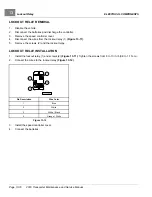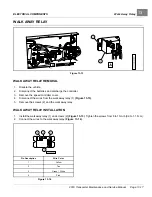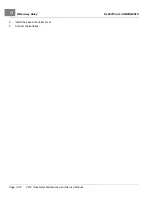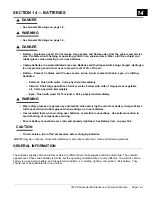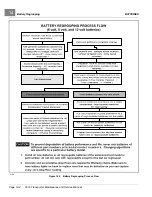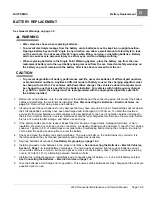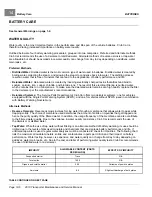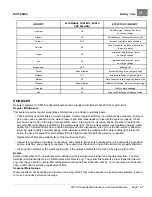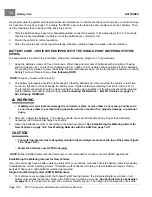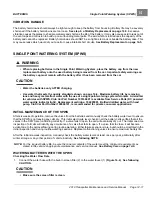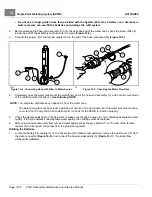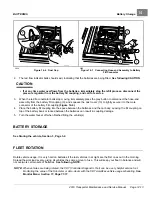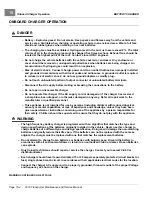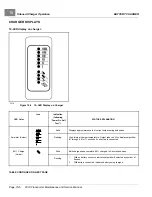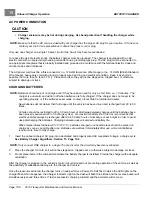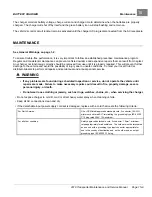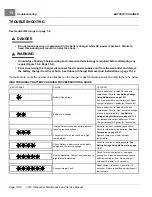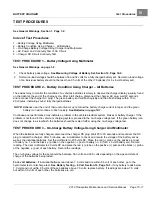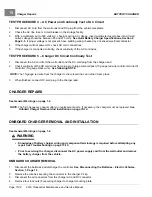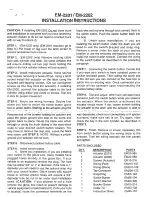
BATTERIES
Single Point Watering System (SPWS)
14
VIBRATION DAMAGE
The battery hold-downs should always be tight enough to keep the battery from bouncing. Battery life may be severely
shortened if the battery hold-downs are too loose.
See step 6. of Battery Replacement on page 14-5.
Excessive
vibration causes the plates to shed prematurely and shortens the life of the battery. It may also cause acid to leak out of
the vent caps and corrosion to build up on surrounding metal parts. The acid which is lost reduces the capacity of the
battery and cannot be replaced. Battery hold-downs should NOT be so tight as to crack or buckle the battery case. This
may cause leaks which would dry out a cell or cause internal short circuits.
See Battery Replacement on page 14-5.
SINGLE POINT WATERING SYSTEM (SPWS)
WARNING
• When replacing batteries in the Single Point Watering System, place the battery cap from the new
replacement battery onto the used battery being removed from the car. Important safety warnings on
the battery cap must remain with the battery after it has been removed from the car
CAUTION
• Water the batteries only AFTER charging.
• Use water that meets the quality standards shown on page 14-6. Maximize battery life by removing
ions and heavy metals from water with the use of a single point watering system deionizer. A deionizer
for vehicles with SPWS, Club Car Part Number 105166801 is available from Service Parts (DC powered
water quality indicator light). Replacement cartridge: 104005901. Bottled distilled water, with hand
pump, Club Car Part Number 104006101, is recommended for private consumer applications.
INITIAL MAINTENANCE OF THE SPWS
After six weeks of operation, remove the valves from the batteries and manually check the battery water level to ensure
that the SPWS is not leaving any cells dry. This initial electrolyte level check on all the battery cells verifies that all the
valves in the SPWS are functioning correctly. If a valve fails to open, the cell will eventually dry out. The initial one-time
inspection of all cells will identify any occurrence of a valve that fails to open. If a valve fails to close, it will become
evident due to the cell overflowing during routine watering. Either failure scenario is rare, but should be monitored in the
initial inspection and during routine watering sessions. Replace malfunctioning valves to ensure maximum battery life.
After the initial six-week inspection, manually check the battery water levels at least once per year, particularly after
winter storage or any other period of vehicle inactivity.
See following NOTE.
NOTE:
For the longest battery life, be sure the mineral contents of the water meet the minimum requirements as
stated in the vehicle’s appropriate maintenance and service manual.
See Battery Care on page 14-6.
WATERING BATTERIES WITH THE SPWS
Checking the Water Flow Rate
1.
Connect the water hose with the built-in screen filter (2) to the water faucet (1)
.
See following
CAUTION.
CAUTION
• Make sure the screen filter is clean.
2019 Transporter Maintenance and Service Manual
Page 14-11
Summary of Contents for TransPorter 4
Page 2: ......
Page 271: ...ELECTRIC MAIN HARNESS Wiring Diagrams Electric Main Harness 18 ...
Page 272: ... Page intentionally left blank ...
Page 273: ...ELECTRIC INSTRUMENT PANEL HARNESS Wiring Diagrams Electric Instrument Panel Harness 18 ...
Page 274: ... Page intentionally left blank ...
Page 275: ...ELECTRIC ACCESSORIES HARNESS Wiring Diagrams Electric Accessories Harness 18 ...
Page 276: ... Page intentionally left blank ...
Page 282: ...NOTES ...
Page 283: ...NOTES ...
Page 284: ...NOTES ...
Page 285: ......
Page 286: ......


